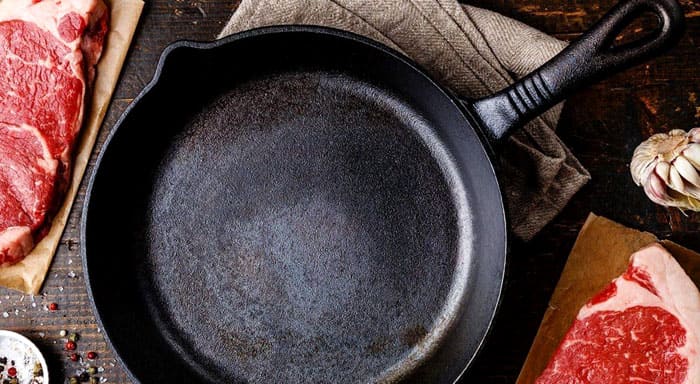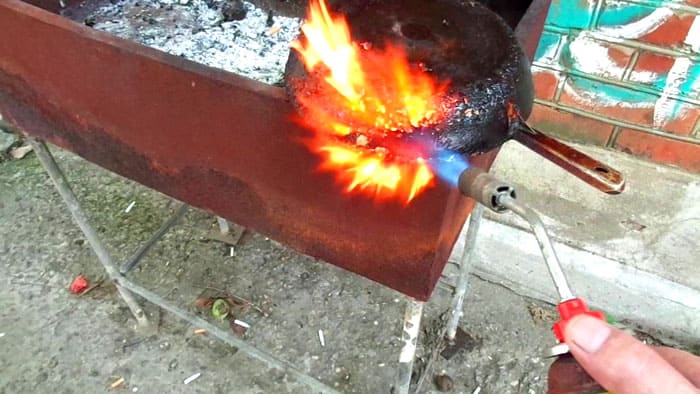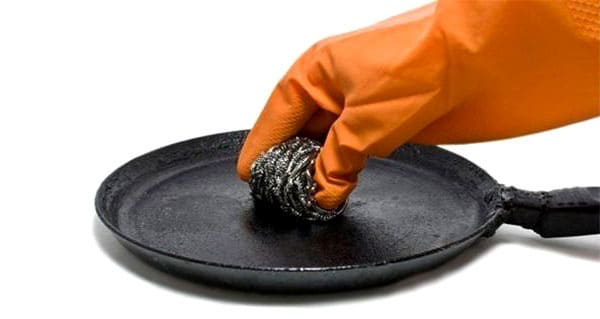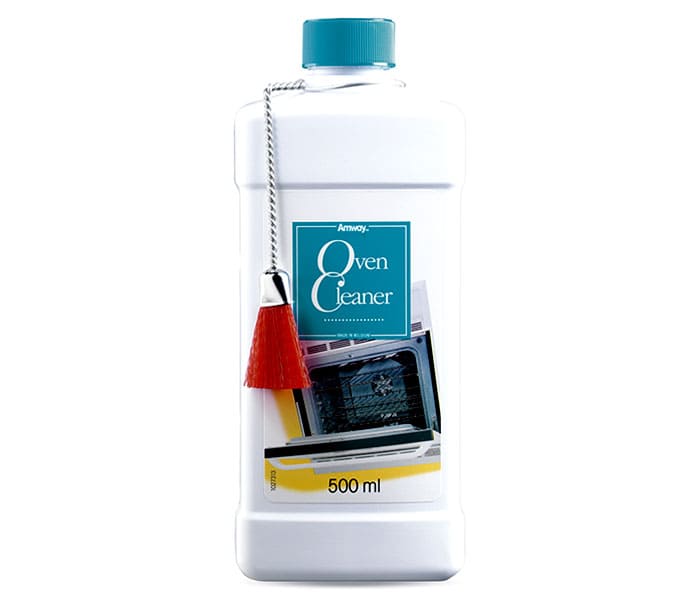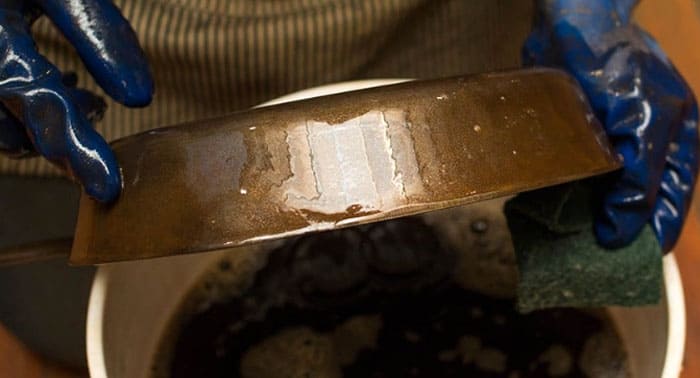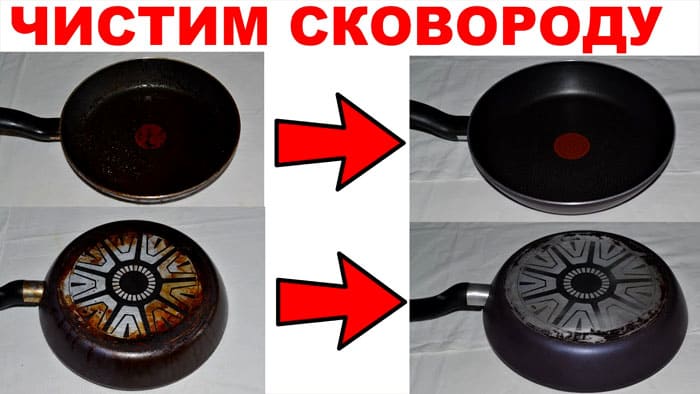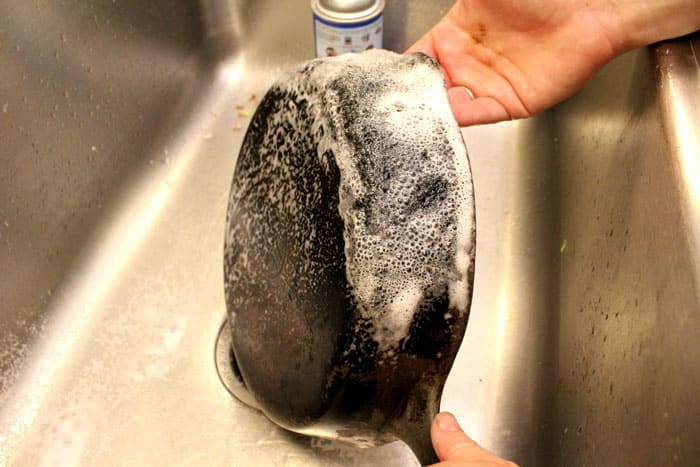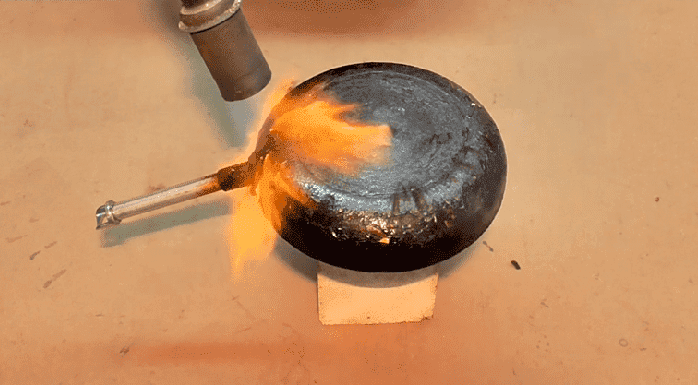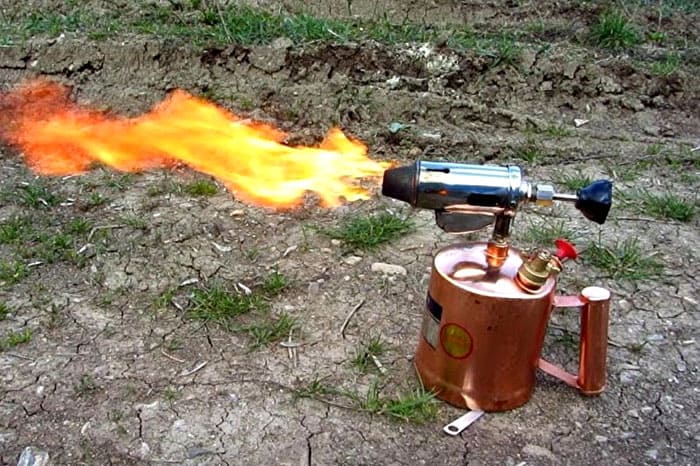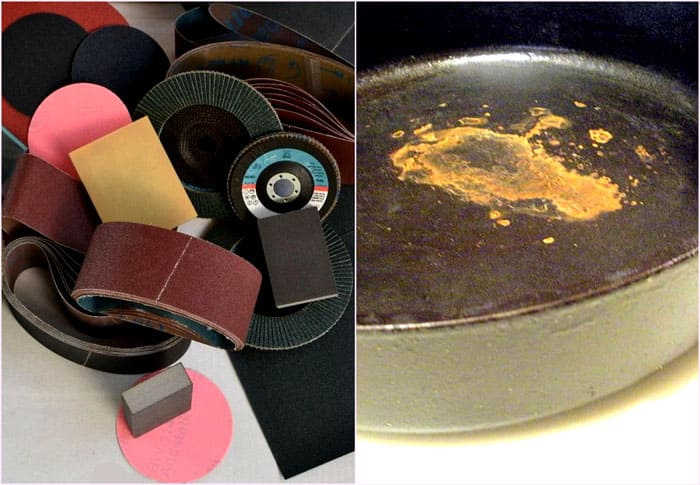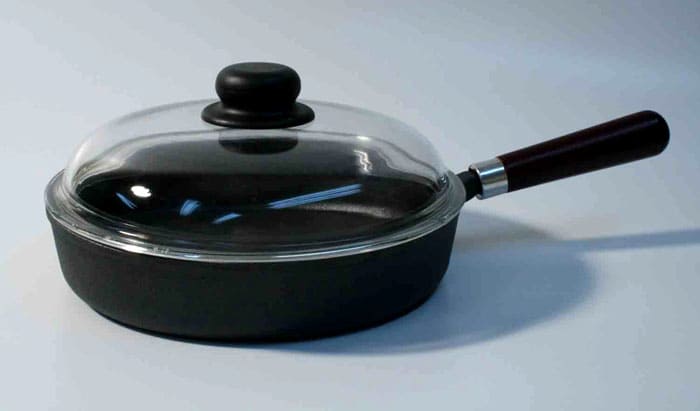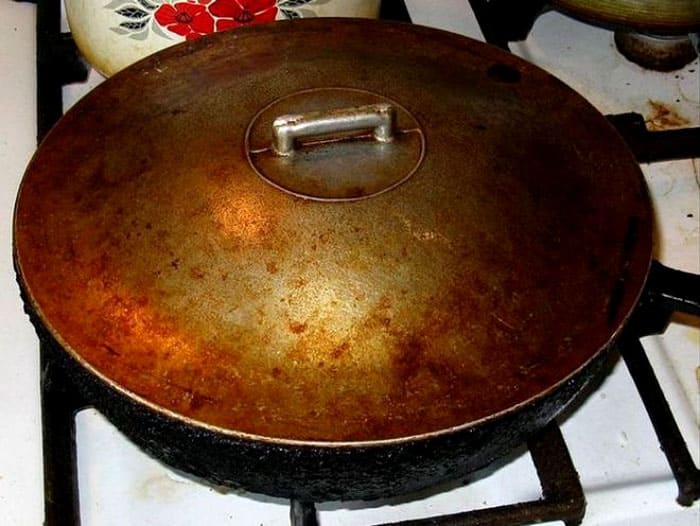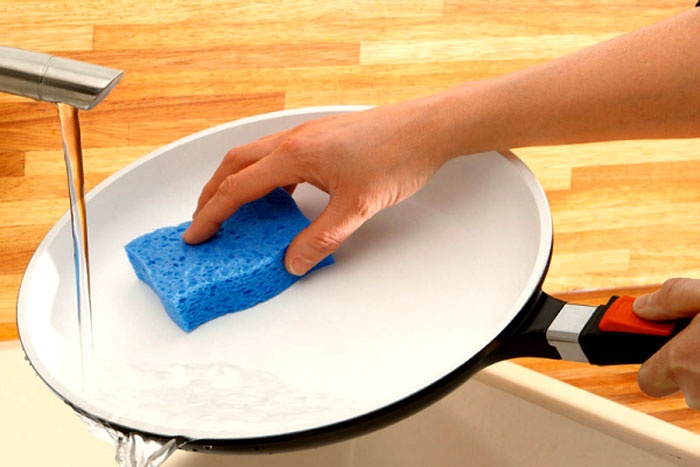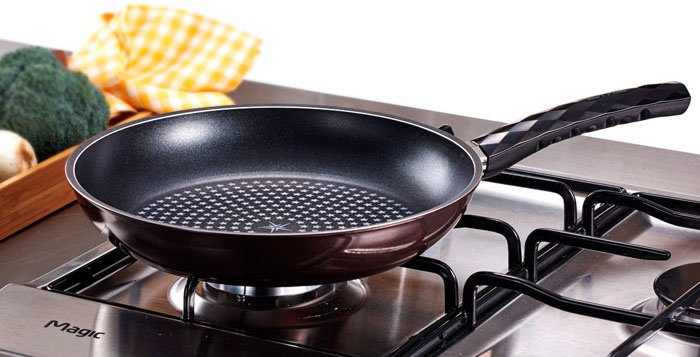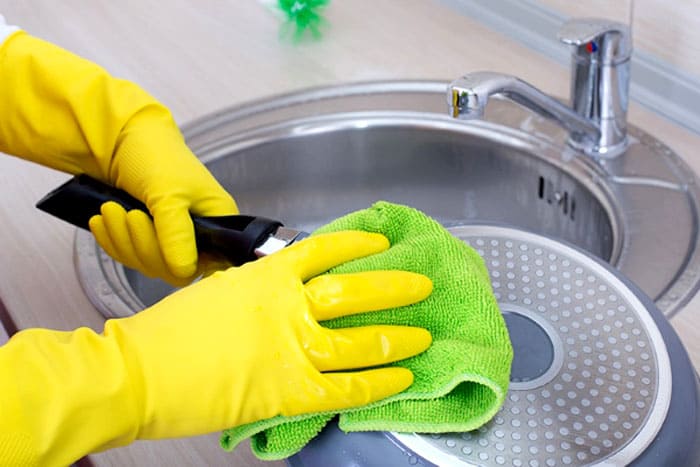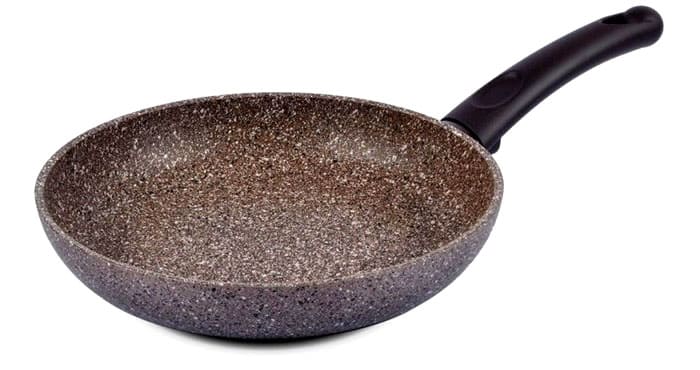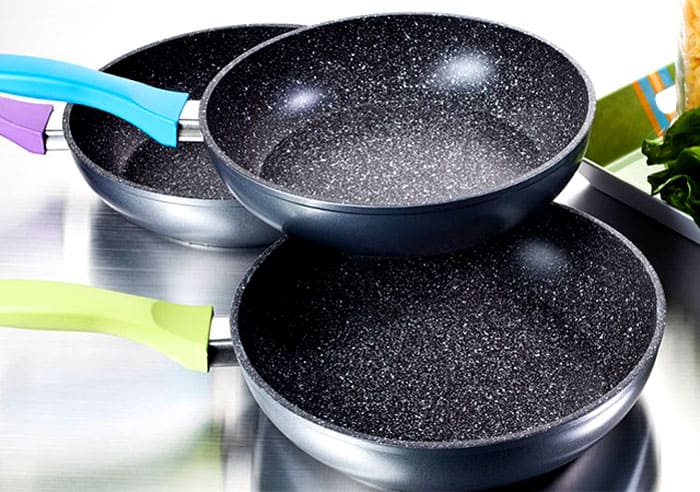How not to waste your time and easily clean the pan of carbon deposits
The loss of the original appearance of household utensils is a common thing. Sooner or later, the dishes in which we fry and stew begin to accumulate unpleasant soot, which also affects the speed of cooking. homemaster.techinfolux.com/en/ magazine offers to solve the problem once and for all: today we will learn how to clean the carbon from the pan.
The content of the article
- 1 Mechanical cleaning of a frying pan from carbon deposits
- 2 Thermal approach to cleaning a frying pan from carbon deposits
- 3 Which of the household chemicals for cleaning the frying pan from carbon deposits is effective
- 4 Helping folk methods for cleaning the pan from carbon deposits
- 5 We study the nuances of cleaning pans from various materials from carbon deposits
- 6 Video: how to remove carbon deposits from the pan
Mechanical cleaning of a frying pan from carbon deposits
If a thick layer of soot appears on your beloved kitchen assistant, you cannot leave it. The fact is that the combination of fat and soot, when reheated to high temperatures, begins to release carcinogens, which is fraught with negative consequences for human health.
Well-known folk methods do not in all cases. Sometimes a radical approach is needed. The mechanical method is suitable for products made of steel, aluminum, cast iron. For all the charm of the future cleanliness of the dishes, there is also a serious disadvantage: along with the carbon layer, the top coating gets under attack, which creates the basis for further more intense pollution.
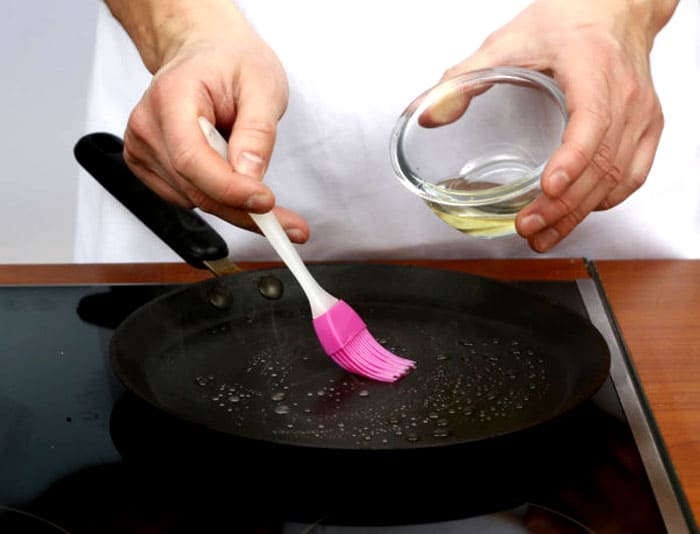
After mechanical cleaning, the pan must be ignited with oil and salt. This will help restore the lost protective layer.
Active cleansing processes include actions sandblasting and a grinder. For this, the kitchen utensils are taken to the tire workshop. There, the mechanic will place the dishes in a chamber, where compressed air and sand are applied to the carbon deposits.
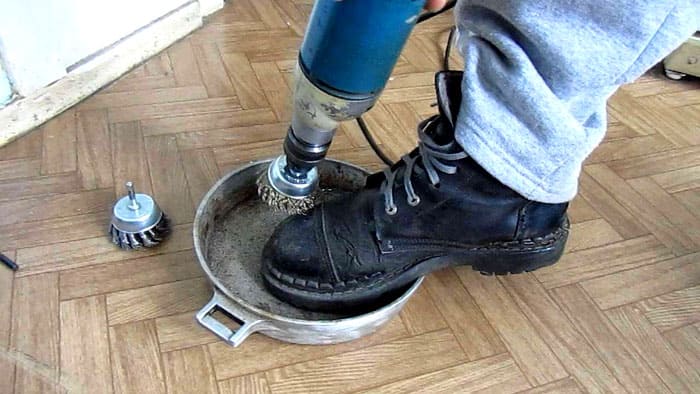
If this method is not possible, then self-cleaning is done with a grinder. A grinder with a petal end circle is also suitable
Thermal approach to cleaning a frying pan from carbon deposits
Heat treatment is contraindicated for cast iron products, so we select a different solution for them.
To carry out the thermal cleaning procedure, prepare a torch or blowtorch. The whole process should take place in a well-ventilated area, you need to take a wire sponge, a brick and a basin of cold water to help.
We put the brick vertically, on it we spread the "hero of the occasion" upside down. We process the bottom with a burner until smoking, which takes about 15-20 minutes. When the smoke stops, we place the product in a bowl of water and observe the release of steam.
Which of the household chemicals for cleaning the frying pan from carbon deposits is effective
What you just can't find on the household chemicals market. But no matter how beautiful and promising a label is, it's better to trust trusted brands.
Amway against carbon deposits
If you use an expensive cleaner for Amway ovens, you can save, paradoxically, both time and money.
Grease and carbon deposits literally disappear within a short time, the product is easy to wash off.
Shumanit Bugs
The tool is somewhat less effective, but more affordable.
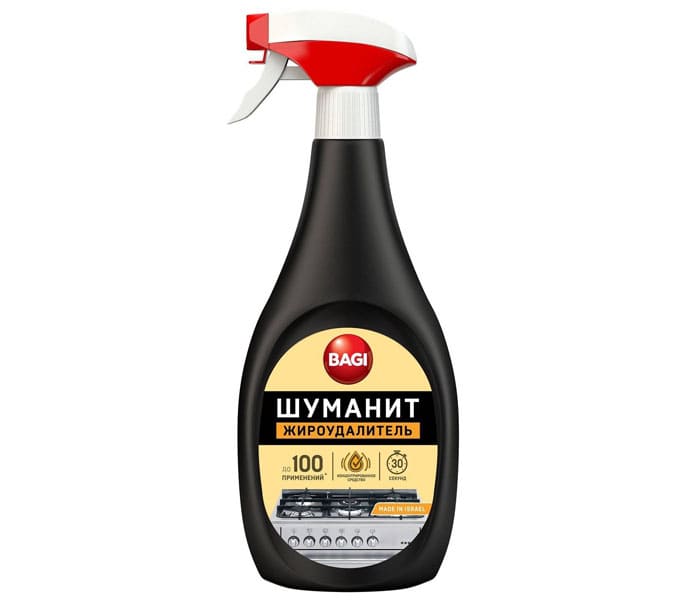
The smell of Shumanit is caustic and strong, so you have to work only with open windows. The frying pan is hidden in a bag so that the smell does not spread throughout all rooms.
Shumanite is applied for 30-60 minutes, then the surface is wiped with a wire sponge and the composition is thoroughly washed off.
Alkali
A tool that is not quite familiar to housewives is used to clean sewer pipes, but the effect for removing carbon deposits is very good.
According to the instructions, the solution is poured into a plastic bucket, and a frying pan is lowered into it.
Important! Remember the lessons of chemistry: we add alkali to the water, and not vice versa.
The whole process must be carried out in durable rubber gloves: the product is removed and washed with a sponge by hand.
Related article:
How to descale a kettle at home: folk methods and using household chemicals, the causes and consequences of the formation of scale, the nuances of work and the prevention of scale formation - in our publication.
Helping folk methods for cleaning the pan from carbon deposits
You can find many different things in the kitchen, including citric acid, vinegar, activated carbon, baking soda, and laundry soap. And if there is silicate glue, then you can try to remove the oldest carbon deposits, which, it seems, witnessed the First World War. The cleanliness of kitchen utensils depends on the diligence of a person, and any of the methods described below will help in this difficult matter.
Lemon acid
Citric acid is used to clean the outer edges of the dishes, which sometimes have an unsightly black appearance.
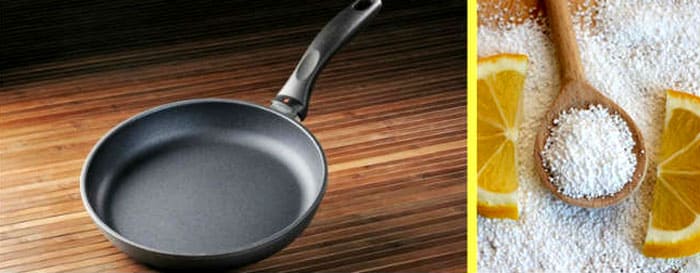
Acid crystals must be diluted in a liter of water and the solution boiled in a wide container that can accommodate a frying pan
When the water has cooled down, the dishes are taken out and treated with a cleaning powder using a stiff brush.
Related article:
How to clean a washing machine with citric acid. We will analyze how to clean a washing machine with citric acid and other available means to increase the lifespan of the technique.
Activated carbon
Another tool for cleaning the outside of the dishes. The wider the frying pan, the more tablets are used, but not less than 10.
After half an hour, you need to wipe the walls with a cleaning powder.
Vinegar solution
In addition to vinegar, the recipe contains soda, salt and water. A sufficiently concentrated solution is poured into a frying pan and put on medium heat. After boiling water, letting the dishes cool down a little, they start cleaning.
Related article:
How to wash the inside of the refrigerator to eliminate the smell. The reasons for the appearance of an unpleasant odor, how to quickly get rid of foreign aromas with the help of household chemicals and folk remedies, the rules for caring for the freezer and prevention for the refrigerator are in our publication.
Silicate glue and soda
Water is poured into a spacious basin and put on fire. You need to wait for the water to boil in order to add shavings of laundry soap, half a mug of soda ash (if there is no such in the house, half a pack of baking soda will come off) and the same amount of silicate glue. A frying pan is lowered into the resulting slurry for 2-3 hours, constantly maintaining a slight boil. If the handle is wooden or plastic, and it is possible to remove it, then this should be done in advance.
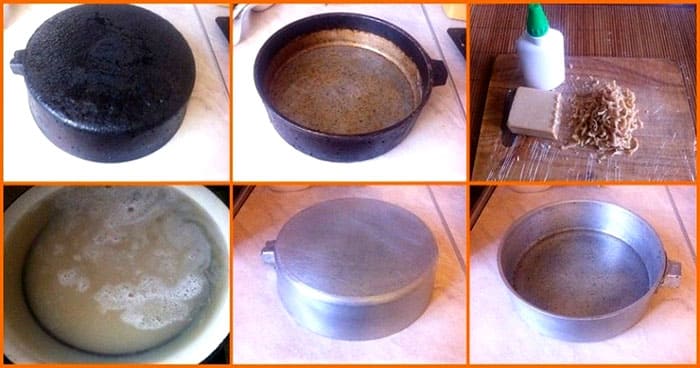
It is necessary to keep a small fire all the time. This method is suitable for cleaning utensils made of cast iron, steel, aluminum and for duralumin pans.
The method is smelly enough, so open the windows wide open. When the main part of the carbon deposits falls off by itself, the process can be considered successfully completed, and you can begin to scrape off the softened dirt residues with a metal scraper.
We study the nuances of cleaning pans from various materials from carbon deposits
Despite the studied methods of effectively cleaning dishes from carbon deposits, you should not immediately selflessly plunge into this process. First you need to realize the fact that if the pans are made from different materials, then the approach to cleaning should be completely different. The most capricious should be recognized as cast iron pans. Apparently, it is not without reason that professional chefs respect them so much.
Good old cast iron and its requirements
If you are not a desperate lady who does not know the feeling of fear, then you can safely go to battle for the cleanliness of a cast-iron frying pan. If you still have fear, throw a man into battle with the old mud.
The incandescent process used to be carried out in Russian stoves, today it is enough to burn the product with a blowtorch for a few minutes. What's nice is that the carbon falls off quickly and easily. All that remains is to remove the soot and enjoy the radiance of a literally new household item.
Sand can be another helper, because not everyone has such a lamp at hand. A cast iron sand bath will be very grateful.
The sand takes 2-3 hours to work, and although the smell will not be the most pleasant all this time, the result will definitely cause a long-awaited smile from the owner of the pan.
If you take 1 part vinegar and 3 parts water, then the resulting solution also effectively removes the hated age-old dirt. Unfortunately, the method is not suitable for everyone: since the vinegar soup in a frying pan will be "cooked" over low heat for 3-4 hours, it is not possible to endure the procedure without open windows and a working hood.
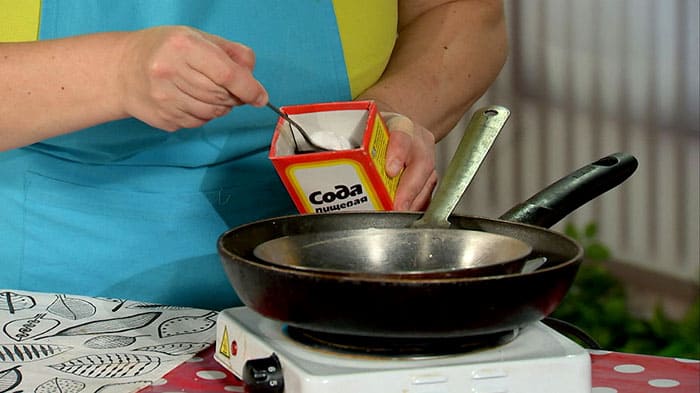
The smell of vinegar is then removed by processing the product with soda: you just need to boil the soda solution right in the dish
Cast iron perfectly tolerates digestion in a solution of silicate glue, soda, laundry soap and water. A metal sponge cannot damage cast iron, which cannot be said about the hands of the hostess, who will try to scrape off the walls and lid using the above methods.
Cleaning the stainless steel pan
Stainless steel dishes have served faithfully for many years, but the old layer of fat can rarely be avoided. For cleansing, you can take half a glass of table salt. It is poured inside the product and left for 2-4 hours.
Salt will help to cope with carbon deposits.Pour half a glass of it into the pan, hold it for several hours and the burnt food will be easily washed off.
The activated carbon cleaning method mentioned above can also be adopted, stainless steel lends itself well to its action.
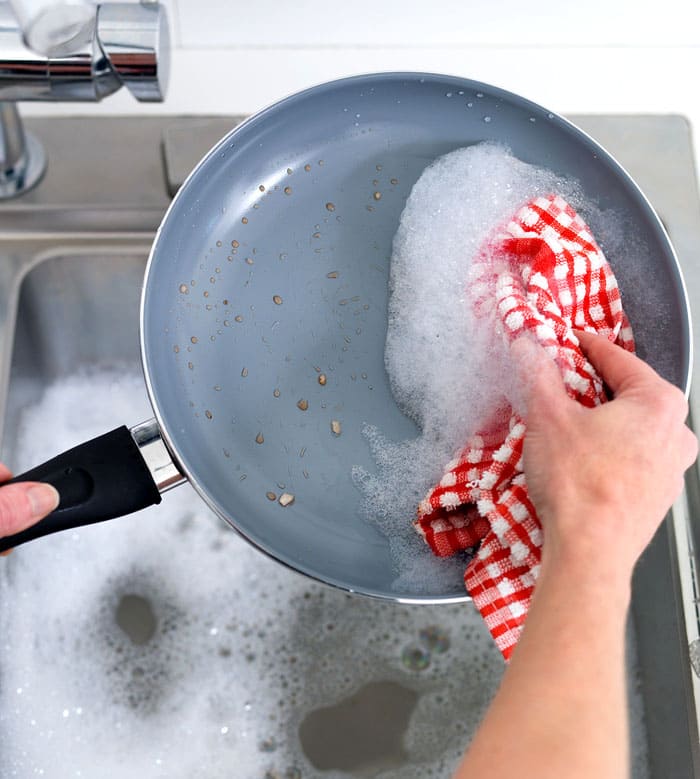
In order not to torment your hands with unnecessary work, you should more often arrange prevention and anti-fat action for your dishes
Aluminum frying pan
Some might say that aluminum can be perfectly cleaned with sandpaper. On the one hand it is true - rubbed the surface, and it shines like new again. But knowledgeable people are ready to take their heads from such a proposal, because such dishes pose a threat to fragile human health!
The thing is that the surface of the metal, after meeting with sandpaper, is actively oxidized, and the oxide will certainly enter the body straight to the bones in order to replace calcium in them. The consequences are predictable: bones become fragile.
You can clean the surface with mild abrasives, but after that you should always lubricate the walls with soapy water and leave the product alone overnight. The resulting film of aluminum dioxide will provide good protection.
If you use coarse abrasive agents, then after them the dishes can simply be thrown away as unusable: aluminum does not tolerate the aggression of alkalis and acids. The sensitive metal favors baking soda, she has a lot of strength to help the product cleanse, but there is not enough capacity to harm it. Soda is applied to a sponge and rubbed on the surface of the product.
Alternatively, you can simply boil the soda solution and leave the dishes in it for 30-60 minutes.
Features for cleaning a ceramic coated pan
Ceramic coating dictates its own requirements for care, so we do not ignore them. This will leave the products in their original form for a long time, but if you listen to bad advice and clean the pan with soda, then you should immediately go to the store for new dishes.
You can wash ceramic dishes by boiling with soda and salt, but part of the non-stick layer will also come off along with the fat and carbon deposits.
It is possible to wash the pan by boiling in silicate glue, but then you will have to wipe off the sticky layer very tediously and for a long time.
Teflon Coated Frying Pan
Teflon utensils should not be stored for years: the Teflon layer is thin and is not intended for centuries-old transfer of the great-grandmother's frying pan from generation to generation.
You can use a quarter of laundry soap to clean the pan. We rub it on a grater, pour the shavings into the pan and fill it with water. Heat the mixture without boiling.
After a couple of hours, soapy water is poured out, and the product is washed with liquid detergent or sprayed with a spray like Mr. Muscle (for the kitchen), Fairy Power, Kiilto with nanosilver.
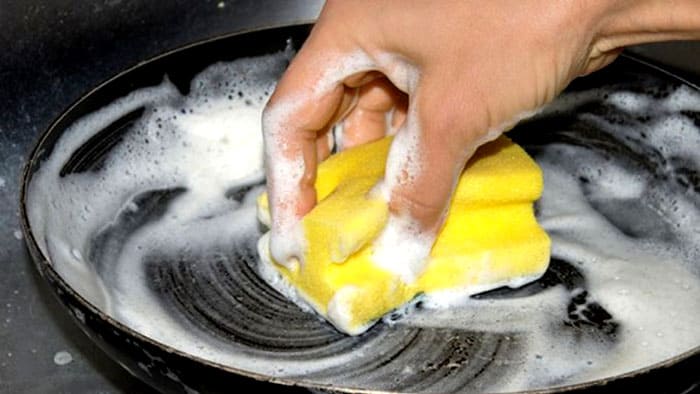
After a couple of minutes, the applied product is thoroughly washed off with water and admired the perfect cleanliness
To consolidate the result, you can simply put an empty dish on low heat for half a minute, then remove it and grease the inner surfaces with vegetable oil.
Marble Coated Frying Pan
More and more housewives began to use aluminum pans with the addition of marble chips. Such products retain the useful substances of the food when fried.
In order not to damage the thin marble layer, proceed according to the rules. Then the service life of such utensils will exceed similar kitchen utensils made of Teflon and ceramics.Carbon deposits practically do not form, so we follow the advice: do not wash such dishes in the dishwasher. We work by hand using a soft sponge and soda.
These utensils are protected from temperature extremes, preventing a hot object from getting under cold water.
We take care of our dishes and do not forget to take care of them immediately after cooking, then the long-term service of our favorite frying pan will not be a hassle!



